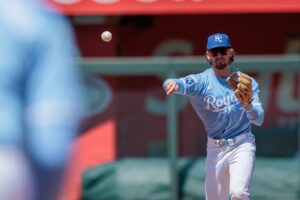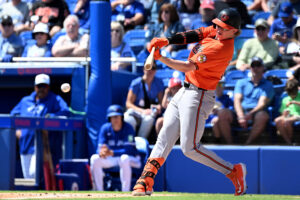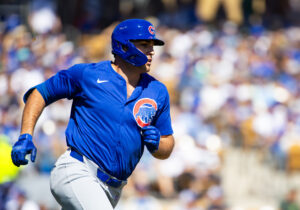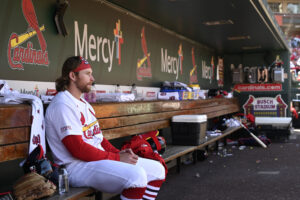Now that we have seen how bad things have been for the Boston Red Sox through the first 10 games we move the Seattle Mariners hot start, their best start ever 10 games into a season. If you have not read the first part of this series covering the Boston Red Sox be sure to check it out as well.
Part II: A Tale of Two Seasons – Seattle Mariners Hot Start
Seattle Mariners – The Best of Times
The Mariners took the off-season seriously, completely revamping the team in their efforts to contend down the road in 2020 or 2021. GM Jerry Dipoto lived up to his “Trader Jerry” moniker, finalizing a variety of moves that swapped out more than half of their 40 man roster from the end of 2018. They also were active in free agency, landing one big name and several other players on smaller, one-year deals. See if you can keep up.
Additions:
CF Mallex Smith (acquired from the Tampa Bay Rays)
CF Jake Fraley (acquired from the Tampa Bay Rays)
SP Justus Sheffield (acquired from the New York Yankees)
SP Erik Swanson (acquired from the New York Yankees)
CF Dom Thompson-Williams (acquired from the New York Yankees)
C Omar Narvaez (acquired from the Chicago White Sox)
SS J.P. Crawford (acquired from the Philadelphia Phillies)
1B/OF Jay Bruce (acquired from the New York Mets)
OF Jarred Kelenic (acquired from the New York Mets)
RP Anthony Swarzak (acquired from the New York Mets)
SP Justin Dunn (acquired from the New York Mets)
1B/DH Edwin Encarnacion (acquired from the Cleveland Indians)
OF Domingo Santana (acquired from the Milwaukee Brewers)
SP Yusei Kikuchi (signed to a 3-year $43 million deal)
SS Tim Beckham (signed a 1-year $1.75m deal)
RP Hunter Strickland (signed a 1-year $1.3m deal)
Subtractions:
C Mike Zunino (traded to the Tampa Bay Rays)
LF Guillermo Heredia (traded to the Tampa Bay Rays)
SP James Paxton (traded to the New York Yankees)
RP Alex Colome (traded to the Chicago White Sox)
SS Jean Segura (traded to the Philadelphia Phillies)
RP James Pazos (traded to the Philadelphia Phillies)
RP Juan Nicasio (traded to the Philadelphia Phillies)
2B Robinson Cano (traded to the New York Mets)
RP Edwin Diaz (traded to the New York Mets)
RF Ben Gamel (traded to the Milwaukie Brewers)
DH Nelson Cruz (signed with the Minnesota Twins)
OF Denard Span (currently unsigned)
RP Adam Warren (signed with the San Diego Padres)
Off-season Review:
Tired? After deciding to step back a bit in 2019 in order to “…take two forward…” in 2020 or 2021, Dipoto focused on three main approaches with his off-season moves. The first was to acquire young, athletic, and controllable MLB assets in exchange for several of their higher-priced veterans.
A great example of this is the Mike Zunino trade that netted the Mariners Mallex Smith. The Rays own Zunino’s rights through 2020, while Seattle controls Smith through 2022. Acquiring SS J.P. Crawford (four years of team control remaining) and C Omar Narvaez (three years of team control) also fit within this strategy.
Dipoto’s second approach was to improve a barren farm system, even if it meant dealing some of their more productive assets. Moving on from ace James Paxton, elite closer Edwin Diaz, and Robinson Cano gave the Mariners several young players to dream on, including three Top 100 prospects (per MLB Pipeline) in SP Justus Sheffield, OF Jarred Kelenic, and SP Justin Dunn.
Lastly, given their desire to avoid a complete tear-down, the Mariners opted to augment their team with a few veteran free agent targets. Yusei Kikuchi was the most heralded addition within this approach, though they did offer pillow contracts to SS Tim Beckham and RP Hunter Strickland as well.
What’s Behind the Record?
The Mariners bashed their way to a division-leading 8-2 start, scoring 73 runs in their first 10 contests, mostly on the bats of newcomers Beckham and Domingo Santana. They lead MLB in TB and HR during that period and set a franchise record in the power department by homering in 10 straight games to begin a season. In addition to leaving the yard at a record rate, the Mariners offense went wild on the basepaths as well. Through 10 games the team has 11 stolen bases (first in MLB) and were efficient thieves, boasting a 91.67% success rate.
Averaging 7.3 runs per game gives a pitching staff a wide margin of error, though Mariners hurlers have done their part as well. Their 3.72 ERA ranked ninth in the AL (14th overall) and, unlike their Boston counterparts, they are more consistent when you break it down by starter and reliever:
| Team | ERA | SIERA | WHIP | K% | BB% | AVG | HR/9 |
| Starters | 3.55 | 4.26 | 1.29 | 16.10% | 3.90% | 0.267 | 1.08 |
| Relievers | 4.01 | 4.55 | 1.31 | 22.50% | 15.00% | 0.179 | 1.34 |
Through 10 games, Seattle starters tossed the second-most innings (58.1) of any unit and were stingy, walking only 10 batters (tied for second in MLB). They allowed the second-most hits (behind Boston) in that time and ranked 29th in K% (16.1%) for MLB rotations.
Seattle relievers were slightly better at striking out batters (22.5% K%) than their starting counterparts but walked 15% of all batters faced. They also led the league in blown saves as well and failed to settle on a more consistent option at the end of their bullpen.
Key Starts to Follow Through 10 Games
Offense:
Tim Beckham: .410/.477/.846, 4 HR
Domingo Santana: .286/.388/.619, 4 HR, 2 SB
Ryon Healy: .289/.349/.711, 3 HR
Dee Gordon: .281/.306/.313, 5 SB
Starting Pitching:
Marco Gonzales: 3-0, 3.20 ERA (4.64 SIERA), 3.7% BB%
Yusei Kikuchi: 4.02 ERA (3.73 SIERA), 18.5% K%, 1.09 WHIP
Mike Leake: 2.92 ERA (3.42 SIERA), 23.6% K%, 1.46 WHIP
Bullpen:
Brandon Brennan: 0.00 ERA (1.22 SIERA), 30.4% K%, 4.4% BB%
Zac Rosscup: 2.45 ERA (7.28 SIERA), 29.2% BB%, 3.00 WHIP
Roenis Elias: 3.18 ERA (3.85 SIERA), 0.706 WHIP
Will This Continue?
One thing is certain; the Mariners bats are going to cool down. In the last five seasons, the closest a team has come to matching Seattle’s runs per game (7.3 per game) was last year’s Red Sox offense (5.41 per game). Even the 1930 New York Yankees (1,067 runs in 154 games) came in beneath Seattle’s current pace in runs per game (6.92 runs per game).
Hot bats like Santana, Beckham, and Healy will cool off eventually, but that does not mean the team will crater offensively. The presence of veteran bats like Encarnacion, Bruce, and 2018 All-Star Mitch Haniger will keep that from happening. Dee Gordon batting ninth is another interesting facet to their lineup that should keep it successful.
The main factor that will keep them from continuing to play at such a high level is their pitching. Leading the league in hits allowed is problematic given the team’s defensive struggles so far (-13 DRS, worst in MLB). Their starting rotation also struggles to put batters away and lacks the high-level velocity seen around the league, ranking 28th in SwStr% (8.4%) and 22nd in fastball velocity.
They do excel at getting ahead of batters (66.4% F-Strike%, second in MLB) and in limiting walks, as previously mentioned. Their lack of velocity does not mean they cannot be successful with their approach, but a contact-heavy style does worry given SIERA’s view of their performance (4.26 SIERA) and how they rate that of the bullpen as well (4.55 SIERA).
Verdict
Again, it is very early to be taking too much from a team’s start when there are over 150 games to go. The Mariners have enough offense to be competitive but do not expect them to contend for a playoff spot this season given the uncertainty surrounding their pitching. That +22 run differential in these games is nice to look at though. Their offense will make them a fun team to watch either way, especially as some of the younger players come up from the farm system to contribute.
Main Photo:
Embed from Getty Images






